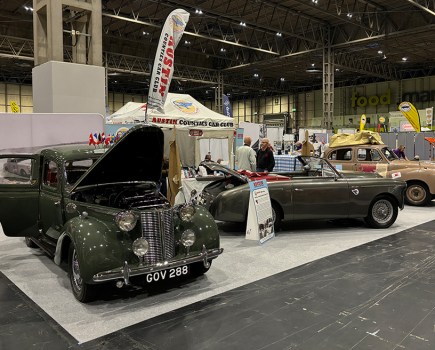The internet was convinced Aston Martin’s iconic winged badge – seen here on a DB7 – was to be replaced. The rumours were false. Aston Martin has been quick to quash rumours that it was changing its iconic winged logo.
Last week, while tracking the progress of a patent application Aston had applied for in July 2016 (a new badge for its range for merchandise), online car magazine AutoGuide.com noted a second filing had been made against the design ‘for use on automobile chassis and design of land vehicles’.
The internet soon lit up with talk of how Aston’s 85-year old escutcheon was to be replaced: Three days later, Andy Palmer, chief executive officer and, posted on Twitter to end the hearsay: “For those who reached out, we have no intention to remove or change the Aston Martin wings. This [other] logo is for merchandise,” he confirmed. Aston-Martin (as it was then billed) formally adopted wings into its logo in 1927, but it was five years later in 1932 that a truly recognisable badge appeared. By 1950, the central ‘Aston Martin’ script (unhyphenated) had gained tractor maker David Brown’s name above its own; the Yorkshire magnate’s title stayed there until 1971.
Typeface changes took place through the ‘Seventies, ‘Eighties and ‘Nineties. By 2003, Aston was moving into its new Gaydon home and a subtle redesign took place – the company adopted these wings from then on.
“FOR MERCHANDISE”
With Aston’s name linked to everything from suitcases to speedboats, marque aficionados noticed similarities between its merchandise logo and the ‘AM’ roundel used during the firm’s post First World War revival; AutoGuide.com produced an animation showing the progression between the two badges. Meanwhile, production figures of Aston Martin’s new DB11 continue to rise. Work continues apace on the firm’s Welsh factory in St. Athan (soon to build the new DBX off-roader) and on the first DB4 GT ‘continuation’ in a 25-car series at Newport Pagnell – the first ‘new’ car to emerge from Aston Martin’s historic home in a decade.








